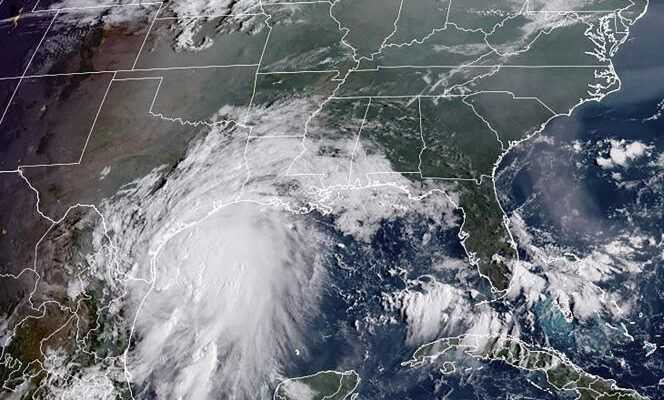IThere were more hurricanes in the Atlantic in 2021 than there were names to assign to them. The World Meteorological Organization (WMO) has exhausted the list of twenty-one names it has each year to designate these meteorological phenomena. For the second time in two years and for the third time in history, the last name on the list has been given. It was attributed to the subtropical storm Wanda which formed on Saturday, October 30.
Since 1953, the WMO has kept six lists of twenty-one first names, which it assigns, by annual rotation, hurricanes. These storms are given their name in alphabetical order with, since 1979, an alternation of female and male first names. Names beginning with the letters Q, U, X, Y and Z are excluded, considered as “Uncommon and difficult to understand in English, Spanish, French or Portuguese, languages spoken in North America, Central America and the Caribbean”, explains the New York Times. When a hurricane is deadly or costly, its name disappears from the list, which is then changed. “It would be inappropriate to use his name for another storm”, justifies theOMM. So Katrina was taken off the list, as was Irma, the most powerful hurricane ever recorded in the Atlantic.
Until the early 2000s, the annual list of names was sufficient, writes the Washington post. “Traditionally, on November 19, we name our fourteenth storm”, said the meteorologist from CNN Allison Chinchar. In 2005, for the first time, the list was exhausted. That year, twenty-seven storms were recorded, including Hurricane Katrina, which killed more than 1,800 people in New Orleans (Louisiana). In 2020, a new record of thirty storms was recorded. The list was therefore exhausted again.
He is “Likely that this situation will recur in the future”, estimated the OMM in a communicated, in March. With this in mind, the WMO Hurricane Committee adopted a complementary list of names in the event of exhaustion of the initial list, which could be used as early as this year. The Atlantic hurricane season runs approximately between 1er June and November 30. If a next hurricane forms by then, then it should be called Adria.
Global warming involved
How to explain this acceleration in the number of hurricanes? “The links between hurricanes and climate change are increasingly evident, remind him New York Times. If the planet warms, we can expect hurricanes to be stronger over time and more powerful storms to be more frequent. ”
Brian McNoldy, hurricane expert for the Capital Weather Gang, qualifies this explanation in the Washington post. According to him, improved weather satellite technology also makes it possible to “Capture more” marginal “storms than a few decades ago”. And therefore to multiply those who will be named, “Especially light and short-lived storms that have no impact on land”, specifies the American newspaper. This is the case of Wanda who should not have repercussions on earth, according to the weather forecast.
These weak storms, many this year, “May well have their origin in man-made climate change”, admits McNoldy, however. Because “A warmer ocean could explain why this environment which would have been little conducive to the formation of storms several decades ago is becoming so, marginally, and that therefore we are starting to see these phenomena appear in places where they did not exist before “, notes the expert.
